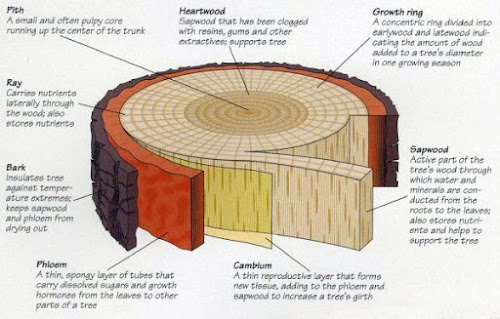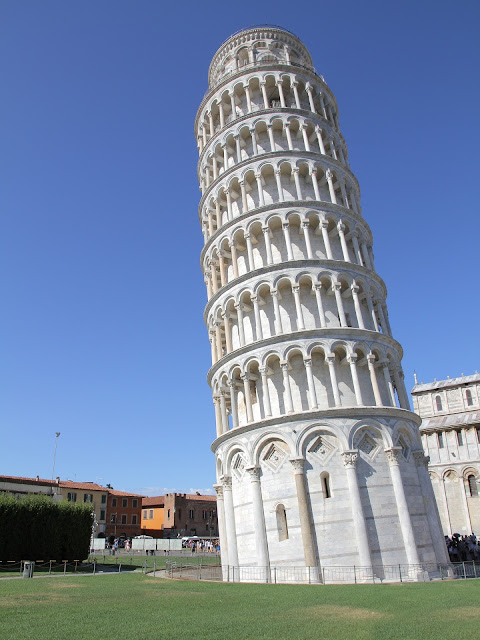Introduction :
Wood is a hard and fibrous substance which forms a major part of the trunk and branches of a tree. It can also be defined as a natural polymeric material which practically does not age. Wood as a building material falls in two major classes i,e, natural and man-made. With the advances in science and technology, wood in its natural form as timber, lumber, etc. is being rapidly replaced by composite wood materials in which natural wood is just a basic ingredient of a matrix or a laminate. The latter are found to be more useful and adaptable as they may be treated chemically, thermally or otherwise as per requirements. Some examples are plywood, fibreboards, chipboards, compressed wood, impregnated wood, etc.
Wood is a good absorber of shocks and so is suitable for construction work in hilly areas which are more prone to earthquakes. Finally, since wood can be easily worked, repairs and alterations to wood work can also be done easily. Owing to the above mentioned advantages, wood is very widely used in buildings as doors, windows, frames, temporary partition walls, etc. and in roof trusses and ceilings apart from formwork.
Market Forms of Timber :
Battens: Timber pieces whose breadth and thickness do not exceed 50 mm.
Baulk: Roughly squared timber piece, it is obtained by removing bark and Sapwood. One cross sectional dimension exceeds 50 mm, while the other exceeds 200mm.
Board: A plank with parallel sides. Its thickness is less than 50mm and width exceeds 150mm.
Deal: Piece of soft wood with parallel sides. Thickness varies from 50mm to 100mm and width does not exceed 230mm.
Log: Trunk of tree obtained after removal of branches.
Plank: Timber pieces with parallel sides. Thickness less than 50mm and width exceeds 50mm.
Pole: Sound long log of wood, dia does not exceed 200mm, also known as spar.
Quartering: Square piece of timber, the length of side being 50mm to 150mm.
Scantling: Timber piece whose breadth and thickness exceed 50mm,but are less than 200mm in length. These are the pieces of misc sizes of timber sawn out of a log.
Types of engineered wood available in market:
a)Plywood
b)veneers
c)Fibre boards
d)Particle boards
e)Blockboard
f)Batten and Lamine boards
a)Plywood:
A wood panel glued under pressure from an odd number (usually 3 to 13) of layers/piles of veneers is known as plywood. The outer most veneer sheets in a plywood panel are called faces. The interior ply which have their grain directions parallel to that of the faces are termed as core or centre. Other piles which have grain directions perpendicular to that in the face are termed as cross bands.
Plywood may be classified upon direction of grains in the plies and on the type of adhesive used. Normally the alternate plies are oriented at 30° or 60° in star plywood. The faces are arranged with the grain at 45° to that of the centres in diagonal plywood. When the plies are bonded together with water-soluble glues such as casein glue, interior grade plywood is obtained and when bonded with phenol formaldehyde adhesive it is identified as exterior grade plywood which is completely water proof.
Sizes available :
2400 x 1200 mm
2100 x 1200 mm
1800 x 1200 mm
2400 x 900 mm
2100 x 900 mm
1800 x 900 mm
Thickness vary from 3mm to 25mm.
Applications : Used for partitions, ceiling, door, concrete form work, etc.
b)Veneers :
The primary process in the manufacture of wood based products is veneering which produces thin sheets of wood known as veneers. The thickness of veneers varies from 0.4 to 0.6 mm. In no case it should exceed 1 mm. The most suitable wood for this purpose is walnut. However other species like teak, sissoo, rose wood, etc. are also used. The logs to be used for this purpose are kept in wet storage to avoid end splitting and are softened by heating with hot water or steam and the bark is removed. The log is then cut to veneers. Depending on the cutting process, the veneers are classified as rotary veneers and sliced veneers. These are used in the manufacture of plywood and other laminated boards.
Sizes available:
i)Thickness vary from 0.4 to o.6 mm.
ii)In no case it should exceed 1 mm.
Applications : Used for doors, tops and side panels for cabinet, wooden flooring, etc.
c)Fibre boards:
These boards built up of felting from wood or vegetable (wood wastes, waste paper, agricultural wastes, etc.) are classified by the process of their moulding. If the boards are moulded by wet process, the main bond is by the felting of woody fibres and not by added glue. For the boards moulded by dry process, the bond between the predried fibres is improved by adding 4–8% of synthetic resin. For better performance wood preservatives and other admixtures are often added to the pulp. Insulating boards are not compressed during manufacture. Fibre boards are manufactured in various densities like soft, medium and hard. The soft boards are used for walls and ceilings. Medium boards find their application in panelling, partition walls, doors and windows. Hard boards have one surface smooth and the other one textured. These have higher densities, better mechanical properties, and improved moisture and termite resistances. The strength and weather properties of hard boards can be improved by oil tempertering and such boards are known as tempered hard boards. Some of the trade names of hard boards are Masonite, Celotex, Essex boards, etc.
Applications : Widely used for walls, ceiling, cladding, partitions, doors, perforated acoustic tiles, bus bodies, etc.
d)Particle boards :
They are manufactured from particles of wood or other ligno cellulose materials which are agglomerated, formed and pressed together by the use of an organic binder together in the presence of heat, pressure or moisture. They are manufactured from small timber pieces and wood wastes. The latter is first converted into small chips. The moisture content of chips is reduced to a certain percentage and then some gluing material, usually phenol formaldehyde, is sprayed. The chips are then spread to form a mat and then pressed in a hydraulic press in presence of heat and moisture. Particle boards avoid wastage of timber as in its making the entire volume of the fallen tree can be utilized. The trees used for making particle boards are eucalyptus, subabool, and rubber wood, and waste of saw mill. These boards provide dimensional stability, smooth uniform surface, and no difficulty in nailing.
Sizes available:
Sizes vary from 4ft to 8ft panels.
Applications : Widely used in buildings, ceilings, floor slabs, door, furniture, etc.
e)Block board :
The core of block boards is made up of strips of wood each not exceeding 25 mm in width, forming a slab, glued between at least two surface veneers. Veneers used for cross bands and faces are either rotary cut or sliced and should be reasonably smooth. Cross band thickness varies between 1–3 mm and face veneers between 0.5 to 1.5 mm in thicknesses. The directions of the grains of the core blocks run at right angles to that of the adjacent outer veneers.
Sizes Available :
These are available in thicknesses of 12, 15, 19, 25, 30, 35, 40 and 50 mm.
Block Boards are available in sizes -
2400 × 1200 mm
2100 × 1200 mm
1200 × 900 mm
1800 × 1200 mm
1800 × 900 mm
Applications : These are extensively used for construction of railways carriages, bodies of buses, marine and river crafts, partitions, furniture, etc.
f)Batten and Lamine boards :
Batten boards have core made up of 80 mm wide wood pieces, forming a slab glued between at least two surface veneers. Whereas, Lamin boards have a core of strips, each not exceeding 7 mm in thickness, glued together to form a slab which in turn is glued between two or more outer veneers. The directions of the grains of the core block run at right angles to that of the adjacent outer veneers.



Comments
Post a Comment